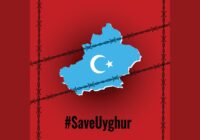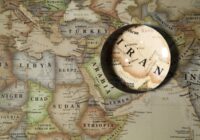While careful concern about China’s rise is in place, outright panic as often witnessed is exaggerated.
The fast rise of China from a developing country in the 1980s to a resourceful global player with still huge untapped future potential has triggered many critical reactions. While some already fear for the survival of the Western liberal system, others attempt to pour oil on troubled water. There are certainly many variables at play, and exact predictions about future outcomes are very hard to make. However, looking at the mix of measures China has structured its foreign policy on in the 21st century, three specific areas come to mind in which the country’s behavior is eye-catching.
The first area concerns finances, the flow of money and investments. Back in the 1990s, the United States was the biggest investor in most Asian countries. With the turn of the millennia or shortly afterward, this changed for many countries, while Chinese replaced American investments as number one. In comparison, the financial commitments of other global players like India, Russia or the European Union are relatively insignificant.
In a second step, in 2013, China announced the creation of the Asian Infrastructure Investment Bank (AIIB) with its main hub in Shanghai, officially due to its frustration with the slow pace of established institutions such as the World Bank, the International Monetary Fund (IMF) and the Asian Development Bank. Unofficially, observers argue that it is rather meant as a counterbalance to American financial influence in Asia. Even if the sums handled by this bank are, for now, still relatively small compared to the older institutions, in this regard, China might have succeeded, as the joining of three major European nations—Germany, France and Switzerland—and other close US allies sparked annoyed reactions from the Obama administration.
It is thus clear that China’s foreign policy behavior does not fit that of a developing country anymore. Another example for this can be found in the area of diplomacy. Whenever a natural disaster wreaks havoc on countries that China identifies as within its sphere of direct influence, the Chinese government is quick in sending monetary aid. Notable examples are the 2004 tsunami in the Indian Ocean and the recent earthquake in Nepal, both of which hit the respective populations hard.
However, critical voices suggest this aid was not primarily given out of humanitarian concerns, but rather it was politically motivated. Chinese diplomats were certainly fast in denying any race for political goodwill or influence—especially in the case of Nepal—but, if this was indeed the case, China would not be alone in doing so, as India and Pakistan have both showed similar behavior.
Finally, there is the area of regional dominance. In general, Chinese military budgets and activities have been increasing significantly for years. As mentioned above, China attempts to secure its influence in every Asian country that it sees as regionally important. Its change in assertive behavior, however, shows most obviously in the South China Sea.
For the past ten years, in a more and more self-assured manner, China has claimed the Spratley and the Senkaku/Diaoyu Islands as part of its sovereign territory, just to name the most prominent territorial disputes with Japan, the Philippines and Vietnam. It is the widespread fear of observers that this situation could lead to a direct clash between China and the US, as the latter could feel pressured to stand by its Asian allies. Satellite images that show how the Chinese military is building an aircraft runway from scratch on one of the disputed islands do not help in calming matters.
China and the United States
As for China’s relations with the United States, can it be described as a “contest for supremacy,” as Aaron L. Friedman attested?
Well, yes and no. Yes, because on both sides there are incentives to strengthen one’s one position, while simultaneously hoping to weaken the other’s, as exemplified by the creation of the AIIB, and rising investment into military budgets on the Chinese side, and the often conducted military maneuvers and exclusive trade agreements with Asian partners on the American side.
On the other hand, both countries have nothing to gain by an outright contest of powers, because although either country is not dependent on each other, their economies and societies are becoming heavily interconnected. Any real clash between the two would lead to both sides losing, with maybe India or Russia as the lucky third—an outcome that both China and the US certainly would like to avoid. The danger of an actual outright conflict between China and the US is not that high.
Surely much more than meets the observer’s eye is happening below the official surface as news about Internet-based hacker attacks on both sides in the last two years indicate. It is also safe to assume that both sides have their plans in order, if any of the two should risk anything outside of the usual banter, as declarations of preparedness by the US Pacific Command (PACOM) and the Chinese government show. Nonetheless, instead of hyping the panic as can often be observed in the coverage of Chinese foreign policy, some form of careful concern would be more in place.
Compared to its own history, as well as in relation to other examples all around the globe, never before has the rise of an international superpower been as peaceful as the ascendance of China in the 21st century. This is not to negate criticism concerning aspects like human rights, sustainable development and others in the wake of China’s rise. Nevertheless, to use the image with which China has most often been characterized, it is rare to witness a dragon rising without him blazing fire.
To summarize, open conflict between the US and China, as feared by many, cannot be ruled out categorically, but for a global player with that much potential, the mix of measures we have been observing so far—ranging from catastrophe support to increasing its military might—rather resembles a careful probing than an attack on the existing world order. China has as much to lose as any other world power. It will be interesting to see what happens next.
The views expressed in this article are the author’s own and do not necessarily reflect Fair Observer’s editorial policy.
Photo Credit: Panitchon / Shutterstock.com
 We bring you perspectives from around the world. Help us to inform and educate. Your donation is tax-deductible. Join over 400 people to become a donor or you could choose to be a sponsor.
We bring you perspectives from around the world. Help us to inform and educate. Your donation is tax-deductible. Join over 400 people to become a donor or you could choose to be a sponsor.
Support Fair Observer
We rely on your support for our independence, diversity and quality.
For more than 10 years, Fair Observer has been free, fair and independent. No billionaire owns us, no advertisers control us. We are a reader-supported nonprofit. Unlike many other publications, we keep our content free for readers regardless of where they live or whether they can afford to pay. We have no paywalls and no ads.
In the post-truth era of fake news, echo chambers and filter bubbles, we publish a plurality of perspectives from around the world. Anyone can publish with us, but everyone goes through a rigorous editorial process. So, you get fact-checked, well-reasoned content instead of noise.
We publish 2,500+ voices from 90+ countries. We also conduct education and training programs
on subjects ranging from digital media and journalism to writing and critical thinking. This
doesn’t come cheap. Servers, editors, trainers and web developers cost
money.
Please consider supporting us on a regular basis as a recurring donor or a
sustaining member.
Will you support FO’s journalism?
We rely on your support for our independence, diversity and quality.







Comment